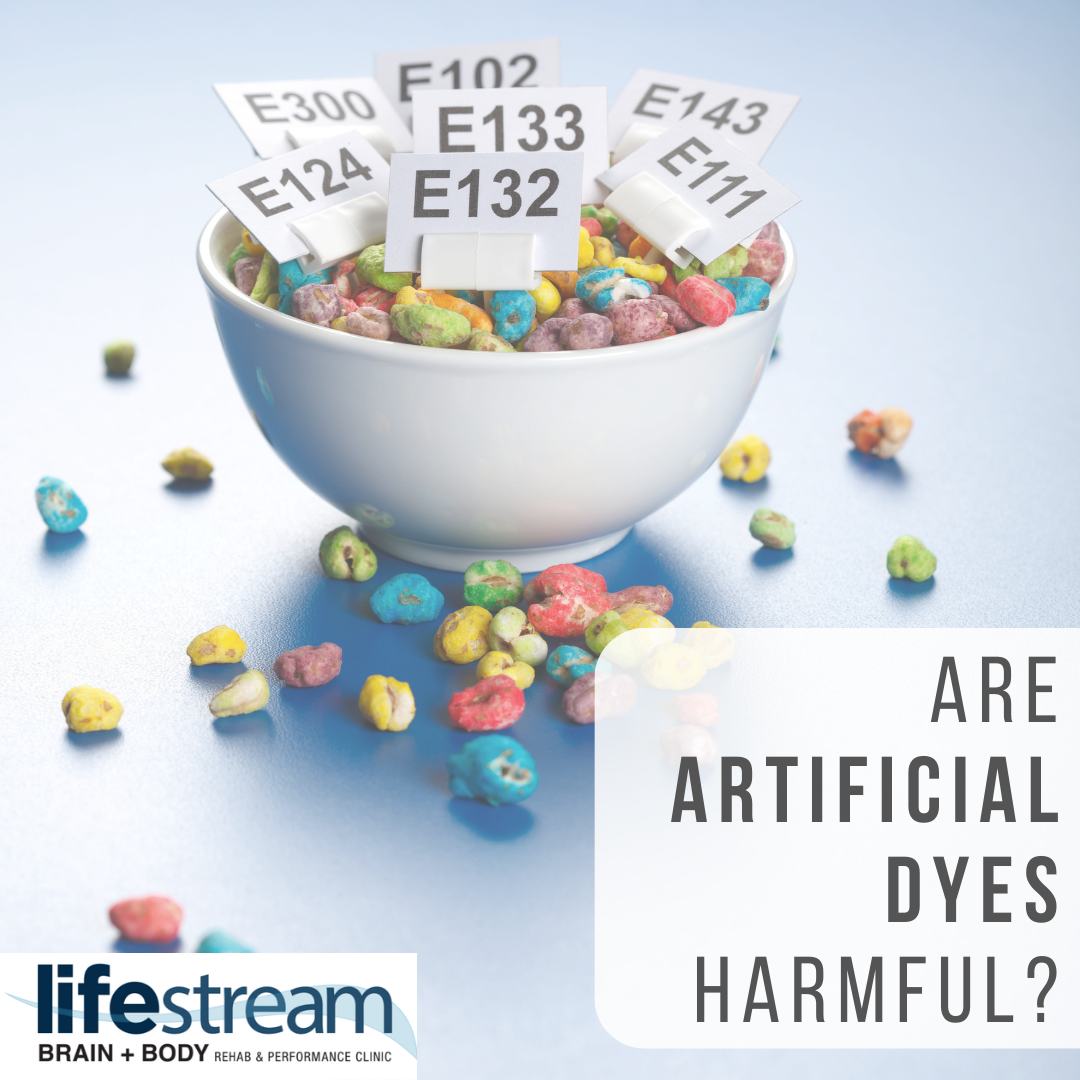Are Artificial Dyes Harmful to Me?
Do artificial dyes cause any harm and should they be avoided?
As “natural” products have gained more popularity in the last several years, we have started to see more and more claims on the outside of products like “non-GMO”, “no artificial ingredients”, or “no artificial dyes”.
Artificial food dye consumption has increased 400% in the last 50 years. We are only now beginning to see some of the long-term effects of regularly consuming food additives, especially in children who are more likely to eat brightly colored foods with food dyes.
What food dyes are common in the US and which ones should be avoided?
The FDA has approved 9 different artificial dyes for food and beverage use; however, Red No. 40, Yellow No. 5, and Yellow No. 6 are most common in the US. The European Union has stricter regulations that require certain dyes and food additives to have warning labels on the food products. What warnings are on there?
Most of the research that has been done has been in regard to the effect on activity, attention, and behavior in children.
In the current scientific literature, there is a supported correlation between artificial dye consumption and adverse behavioral outcomes in children, especially in a specific subset of the population. More and more studies are being conducted to figure out the mechanism by which these artificial dyes could cause problems. Blue No. 1 is able to cross the blood brain barrier, which could be a possible mechanism of altering brain activity. Additionally, food dyes have the ability to alter the concentrations of certain trace elements in the body which are important for brain function. Yellow No. 5 has been shown to cause inflammation in the stomach.
The problem is that while it is required by law for all dyes to be included in the ingredient list on the nutrition label, it is not required to include the amount in the product. Therefore, the knowledge about the actual amount of exposure we’re getting is unknown. An acceptable daily intake (ADI) was established by the FDA; however, the standards were established decades ago and not with the effect of behavior problems in children in mind. These standards have not been changed since then even though the standards were lowered by the WHO and the European Food Safety Authority (EFSA). Regulations are set by the FDA for the maximum amount of an additive allowed in a food product, and they are supposed to test domestic and imported goods for compliance to these standards; however, how often that actually happens is questionable.
Additionally, these food dyes are used so widely and in products that the consumer may not be aware of like fruits and vegetables, fruit juices, soft drinks, flavored yogurts, hydration powders, baked goods, sausage casings, processed fruits and vegetables, chips and much more. These additives are also in products the consumer may be aware of like candy, frostings, breakfast cereals, puddings, processed snacks, etc.
While there seems to be a correlation between food dye consumption and adverse behavior in children, there is no evidence to say that artificial dye consumption is the cause of attention and behavior issues.
It is always good though to be aware of what is in the food that you are consuming. Take some time to look at the nutrition labels of the foods in your pantry. You may be surprised to figure out how many things you eat on a daily basis have food dyes in them.
Sources:
https://www.canr.msu.edu/news/101-series-food-dye#:~:text=The%20EFSA%20has%2039%20approved,Allura%20Red)%2C%20Yellow%20No.
https://www.advisory.com/daily-briefing/2019/01/03/banned-foods
https://oehha.ca.gov/risk-assessment/press-release/report-links-synthetic-food-dyes-hyperactivity-and-other
https://oehha.ca.gov/media/downloads/risk-assessment/report/healthefftsassess041621.pdf
https://www.ncbi.nlm.nih.gov/pmc/articles/PMC9573786/
https://academic.oup.com/nutritionreviews/article/71/5/268/2460188?login=false
https://www.sciencedirect.com/science/article/pii/S0889157522002678
https://www.ncbi.nlm.nih.gov/pmc/articles/PMC9052604/#:~:text=The%20OEHHA%20report%20reviewed%20all,based%20on%20general%20toxicology%20studies.
https://pubmed.ncbi.nlm.nih.gov/32116139/
https://www.fda.gov/food/food-additives-petitions/color-additives-questions-and-answers-consumers
https://www.ksre.k-state.edu/humannutrition/nutrition-topics/eatingwell-budget/meals-documents/IdentifyingFoodsThatContainSyntheticFoodDyes.pdf

